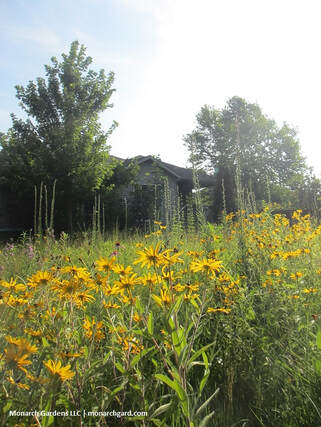I'm thinking about Ratibida pinnata and Rudbeckia hirta. The former is a short-lived perennial meant to vanish over time when it's in a thick, naturally-layered and resilient bed. If you use it on its own there are many problems: it's too tall (flops) and too open (weeds can easily compete underneath). In a tallgrass prairie it's one of the first plants to move in but won't stay around in large numbers until the area is disturbed, often via fire.
Rudbeckia hirta is more like a biennial, with basal foliage the first year that's good at weed suppression, and in year two it flowers but by late summer is getting leggy and / or dying back in ugly fashion. So if you have an open garden bed, Rudbeckia looks great for a while, and it will even reseed, but you have to wait two years to get a similar show again, and by then weeds are back and the bed may look lopsided.
And maybe a big part of the issue we have with plants like the above is that we tend to treat them as static, sculptural individuals. These plants evolved to grow in a rich, lush, layered, dynamic, ever-changing landscape. A traditional garden bed is too often the opposite -- specimens placed individually apart from others in single layers with wood mulch meant to look the same for a decade. For example, if you put a grouping of Ratibida pinnata (a tall plant) behind a grouping of shorter Asclepias tuberosa, it's going to 1) look weird and 2) behave in ways detrimental to the health and longevity of the bed. Those Ratibida are going to slouch over the Asclepias and fade away. These plants did not evolve in this kind of community.
If you walk into a prairie it's more likely you'll see small groupings or even smatterings of individual Ratibida and Rudbeckia. Now, in a home garden where it's critical to up the aesthetic show, we can bring in more of each species in larger masses -- but we still absolutely have to have the main component of the wild community they came from, plant layers underneath and alongside, especially the grasses. We can up the layering and seasonal show even more by including Callirhoe involucrata, Liatris punctata, Pycnanthemum tenuifolium, Baptisia minor, and Solidago flexicaulis -- all weaving in and out of the sedge and grasses like we'd see in a prairie, but brought down to scale and floral impact for the home garden. If we don't have those other forbs in the mix, then in a few years (if we're dependent on the Ratibida and Rudbeckia) we'll have few to no flowers at all.
So let's bullet point the above:
- Choose a diversity of plants from the same wild plant community.
- Include plants from various functional layers: groundcover, mid height, tall architectural.
- Have roughly 50% of the bed in sedge and / or bunchgrass.
- Plan to replant early-successional colonizers in a few years if you want them to stay around.



 RSS Feed
RSS Feed

